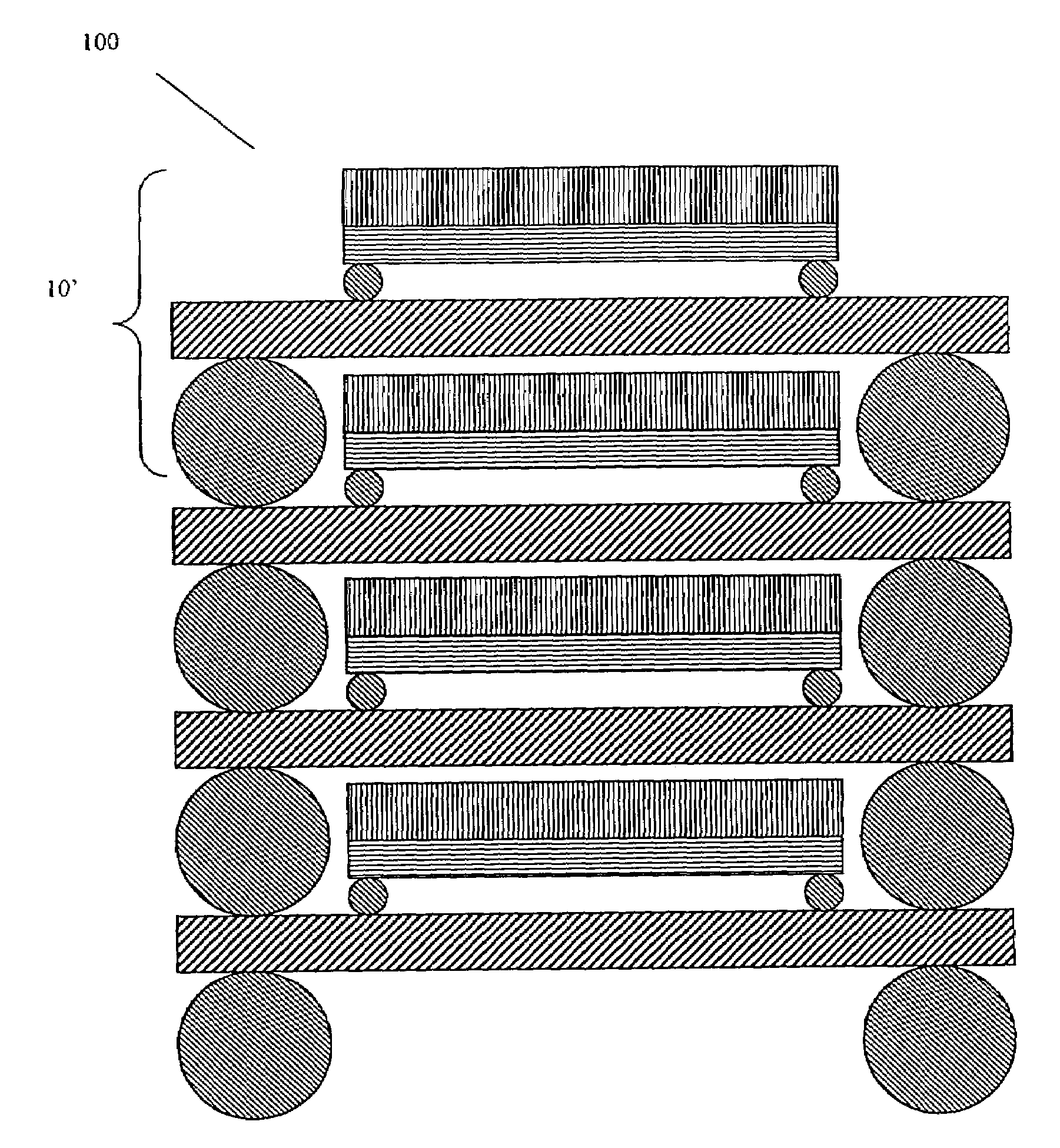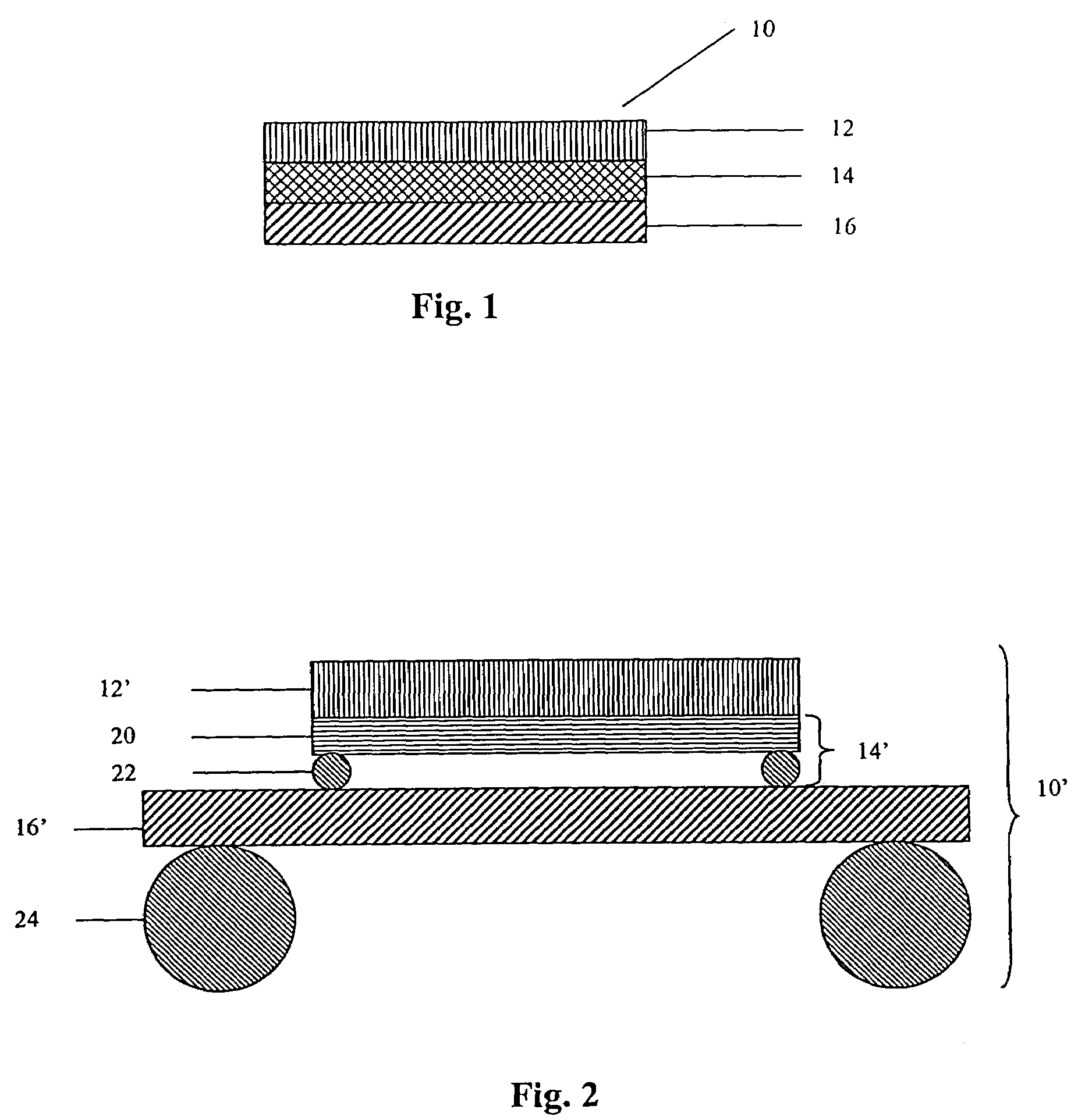Expansion constrained die stack
a technology of die stack and expansion restriction, which is applied in the direction of printed circuit aspects, printed circuit stress/warp reduction, basic electric elements, etc., can solve problems such as additional interference, and achieve the effects of increasing the density of components, and increasing speed
- Summary
- Abstract
- Description
- Claims
- Application Information
AI Technical Summary
Benefits of technology
Problems solved by technology
Method used
Image
Examples
Embodiment Construction
[0042]Turning now to the drawings, printed wiring board assemblies are shown that can be used to create die stacks. In one embodiment, the printed wiring board assemblies include semiconductor dies that are attached to an interposer substrate using components that can be conceptualized as an electrical connection layer. The printed wiring board assemblies can be configured with single or multiple semiconductor dies attached to one or both sides of the interposer substrate in any variety of configurations. The printed wiring board assemblies in accordance with the present invention can be layered to form die stacks. In several embodiments, intermediate substrates are used to facilitate the creation of die stacks. In another aspect of the invention, one or more die stacks in various die stack configurations can be mounted on a printed wiring board to create a die stack assembly. The use of interconnection components to connect adjacent layers in the die stack can enable the communicat...
PUM
 Login to View More
Login to View More Abstract
Description
Claims
Application Information
 Login to View More
Login to View More - R&D
- Intellectual Property
- Life Sciences
- Materials
- Tech Scout
- Unparalleled Data Quality
- Higher Quality Content
- 60% Fewer Hallucinations
Browse by: Latest US Patents, China's latest patents, Technical Efficacy Thesaurus, Application Domain, Technology Topic, Popular Technical Reports.
© 2025 PatSnap. All rights reserved.Legal|Privacy policy|Modern Slavery Act Transparency Statement|Sitemap|About US| Contact US: help@patsnap.com



